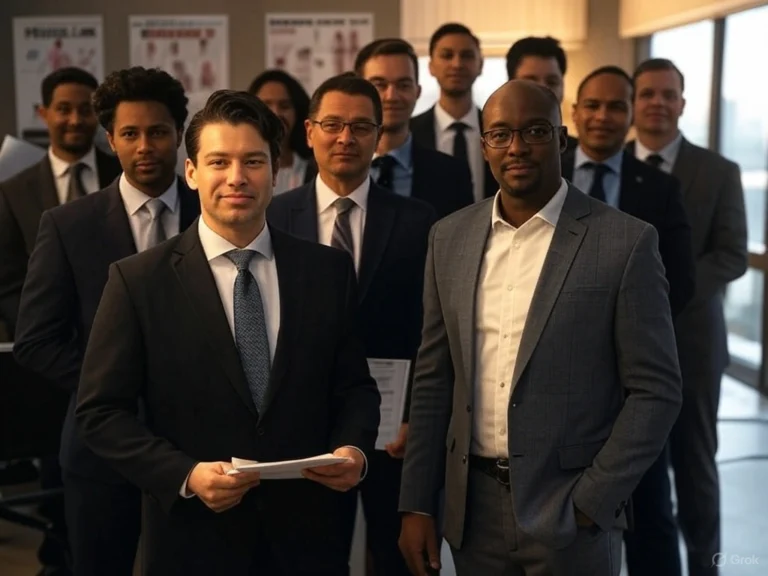
In the complex landscape of U.S. immigration law, international students face numerous challenges and opportunities when pursuing their educational goals. The United States maintains a structured system of visa options for international students that allows foreign nationals to study at American educational institutions. These visa pathways serve as the gateway for hundreds of thousands of students annually who seek to benefit from the prestigious academic environment that U.S. institutions offer.
The primary student visa types available to international students include the F-1 visa for academic studies, the J-1 visa for exchange visitors, and the M-1 visa for vocational training. Each visa category carries specific eligibility requirements, limitations, and post-graduation opportunities that students must carefully consider before applying. Understanding these distinctions is crucial for maintaining lawful status and maximizing educational and professional opportunities in the United States.
Recent developments under the Trump administration have brought significant changes to the student visa application proceso and enforcement mechanisms. In April 2025, numerous universities reported that international students had their visas revoked without warning, highlighting the precarious nature of immigration status even for those in full compliance with visa regulations. This enforcement trend underscores the importance of understanding the legal framework governing student visas and the potential vulnerabilities international students may face.
Primary Student Visa Categories
The U.S. immigration system offers three main visa classifications for international students seeking education in the United States. Each category serves a distinct purpose and comes with specific requirements and restrictions that applicants must understand before proceeding with their educational plans.
The F-1 visa stands as the most common student visa option, designed specifically for individuals pursuing academic studies at accredited U.S. colleges, universities, or language training programs. F-1 visa holders must maintain full-time enrollment and can only work on campus for up to 20 hours per week during the academic year. This visa category also offers valuable post-graduation benefits through Optional Practical Training (OPT), allowing students to gain practical work experience related to their field of study for up to 12 months, with STEM graduates eligible for an additional 24-month extension.
The J-1 visa serves as the primary option for exchange visitor programs, including high school and university study. This visa category emphasizes cultural exchange and typically involves sponsorship through designated exchange programs. J-1 students may be subject to a two-year home residency requirement, meaning they must return to their home country for at least two years after completing their program before being eligible for certain U.S. immigration benefits. However, J-1 students can also participate in academic training opportunities similar to OPT, though the specific duration and requirements differ.
For those pursuing vocational or non-academic training, the M-1 visa provides a pathway to study at technical schools or other non-academic institutions. Unlike F-1 students, M-1 visa holders face more significant restrictions on employment opportunities. They cannot work during their studies and have limited practical training options after program completion. M-1 students must also demonstrate sufficient financial resources to cover their entire course of study and living expenses upfront, as they cannot rely on employment income during their stay.
The Student Visa Application Process
Securing a student visa for the US involves a multi-step process that begins long before a student arrives at an American port of entry. Understanding this process thoroughly helps ensure a smooth transition to studying in the United States and maintaining lawful immigration status throughout one’s academic journey.
The first step in the student visa application process involves gaining admission to a Student and Exchange Visitor Program (SEVP)-certified institution. Once accepted, the school issues either a Form I-20 (for F-1 and M-1 students) or DS-2019 (for J-1 students). These documents confirm the student’s acceptance into a specific program and provide details about the course of study, program duration, and estimated costs. After receiving this documentation, students must pay the SEVIS fee, which funds the database system that tracks international students throughout their stay in the United States.
With the SEVIS fee paid and necessary documentation in hand, students can then apply for their visa at a U.S. embassy or consulate in their home country. This typically involves completing the DS-160 online application form, paying the visa application fee, and attending an in-person interview. During the interview, consular officers assess whether the applicant qualifies for the visa by evaluating their academic preparation, English language proficiency, financial resources, and ties to their home country. Strong evidence of intent to return home after completing studies is particularly important, as student visas are nonimmigrant visas that presume temporary stay.
Upon approval, the visa is affixed to the student’s passport, allowing them to travel to the United States. However, it’s important to note that the visa itself only permits entry to the country; it does not guarantee admission or determine how long one can stay. At the port of entry, U.S. Customs and Border Protection officers make the final determination on admission and issue an I-94 record that indicates the student’s status and authorized period of stay, which typically extends for the “duration of status” rather than a specific date for F-1 students.
Maintaining Student Visa Status
Once admitted to the United States, international students must vigilantly maintain their visa status to avoid serious immigration consequences. Maintaining status involves adhering to specific requirements that vary depending on the visa category but generally include full-time enrollment, limited employment activities, and timely reporting of any changes in personal information or academic program.
For F-1 students, maintaining status requires continuous full-time enrollment during each academic term, except during official school breaks or when authorized for a reduced course load due to academic difficulties, medical conditions, or final term of study. Students must also refrain from unauthorized employment and keep their passport valid at all times. Additionally, any changes in address, academic program, or funding sources must be reported to the Designated School Official (DSO) within 10 days. The DSO serves as the primary point of contact for immigration matters and updates the student’s information in the SEVIS database.
Recent enforcement actions highlight the precarious nature of student status. In April 2025, universities across California, including UCLA, UC San Diego, UC Irvine, UC Berkeley, and Stanford, reported that dozens of international students had their SEVIS records terminated without warning. University officials discovered these terminations only after manually checking the federal database, as no automated notifications were issued. This unprecedented enforcement approach left affected students immediately out of status and potentially subject to deportation, despite being enrolled full-time and otherwise complying with visa regulations.
The Student and Exchange Visitor Information System (SEVIS) plays a central role in status maintenance. This web-based system, maintained by the Department of Homeland Security, tracks all F, J, and M visa holders throughout their stay in the United States. If a student’s SEVIS record is terminated, their visa becomes invalid immediately, making them out of status regardless of whether they continue to attend classes. In the recent wave of terminations, immigration authorities cited a Cold War-era provision allowing deportation if a noncitizen’s activity poses “potentially serious adverse foreign policy consequences,” though affected students and universities received no clear explanation linking the terminations to specific security concerns.
Employment Options for International Students
The U.S. immigration system provides several structured pathways for international students to gain valuable work experience while maintaining their visa status. These employment options vary significantly based on visa type and program requirements, with F-1 students generally having the most flexible opportunities.
For F-1 students, on-campus employment offers the most accessible work option, allowing up to 20 hours per week during the academic year and full-time during official school breaks. This employment must take place on campus or at an educationally affiliated location and does not require special authorization beyond maintaining valid F-1 status. After completing one academic year, F-1 students may become eligible for Curricular Practical Training (CPT), which permits off-campus employment that is an integral part of the established curriculum. CPT must be authorized by the DSO and can be part-time or full-time, though students who use 12 months of full-time CPT become ineligible for post-completion OPT.
Optional Practical Training (OPT) represents perhaps the most valuable employment benefit for F-1 students. This program allows up to 12 months of work authorization in a position directly related to the student’s major field of study. Students can use OPT during their academic program (pre-completion) or after graduation (post-completion), with most choosing to reserve the full duration for post-completion work. Students in STEM fields enjoy a significant advantage through the STEM OPT extension, which provides an additional 24 months of work authorization beyond the initial 12-month period, for a total of 36 months.
J-1 students have similar but distinct employment options through Academic Training (AT), which allows them to work in their field of study during or after their academic program. The duration of AT depends on the length of the academic program, with a maximum of 18 months for most students and up to 36 months for postdoctoral training. Unlike OPT, Academic Training must be authorized by the Responsible Officer (RO) or Alternate Responsible Officer (ARO) of the exchange program, not the university’s DSO.
M-1 students face the most restrictive employment options, with no authorization for work during their vocational program. After completing their studies, M-1 students may apply for practical training for a period not exceeding the length of the training program or one year, whichever is shorter. This limited duration reflects the vocational focus of the M-1 visa and its emphasis on specific skill acquisition rather than broader academic or professional development.
Post-Graduation Immigration Options
After completing their academic programs, international students often seek ways to remain in the United States to gain professional experience or pursue permanent residency. The transition from student status to other immigration categories requires careful planning and understanding of available pathways.
The H-1B visa for specialty occupations represents the most common post-graduation option for international students seeking employment in the United States. This visa category requires sponsorship from an employer and applies to positions requiring theoretical and practical application of specialized knowledge typically requiring a bachelor’s degree or higher. The annual cap of 65,000 regular H-1B visas, plus an additional 20,000 for those with U.S. master’s degrees or higher, creates significant competition. The selection process typically involves a lottery system, making outcomes unpredictable even for well-qualified candidates. Students transitioning from F-1 OPT to H-1B status may benefit from the “cap-gap” provision, which extends their work authorization if their employer files an H-1B petition on their behalf before their OPT expires.
For individuals with extraordinary ability in their field, the O-1 visa offers an alternative pathway that avoids the H-1B cap limitations. This visa category applies to those who have demonstrated sustained national or international acclaim in sciences, arts, education, business, or athletics. While the standards for qualification are high, requiring extensive documentation of achievements and recognition, the O-1 visa provides greater flexibility in terms of duration and does not have an annual numerical limit. Students who have made significant contributions to their field during their studies or OPT period may consider this option.
Employment-based green cards provide a pathway to permanent residency for qualified international students. These include EB-1 for individuals with extraordinary ability (similar to O-1 criteria but with permanent status), EB-2 for professionals with advanced degrees or exceptional ability, and EB-3 for skilled workers and professionals. Each category has specific requirements and processing times, with country-specific backlogs affecting wait times significantly for applicants from high-demand countries like India and China. The PERM labor certification process, required for most employment-based green card categories, involves demonstrating that no qualified U.S. workers are available for the position, adding complexity and time to the process.
Family-based immigration offers another potential pathway for international students who have close relatives who are U.S. citizens or permanent residents. Immediate relatives (spouses, parents, and unmarried children under 21) of U.S. citizens have priority and face no annual numerical limitations, while other family relationships fall into preference categories with varying wait times. Marriage to a U.S. citizen during or after studies represents a common path to permanent residency, though immigration authorities scrutinize such relationships to ensure they are genuine and not entered into solely for immigration benefits.
Recent Policy Changes Affecting International Students
El paisaje de student visa regulations has undergone significant changes in recent years, with policy shifts affecting everything from visa issuance to post-graduation work opportunities. These changes reflect broader immigration policy trends and have important implications for current and prospective international students.
In early April 2025, a wave of visa revocations targeting international students at prestigious universities across the United States marked a significant enforcement shift. The Trump administration canceled dozens of student visas at institutions including UCLA, UC San Diego, UC Irvine, UC Berkeley, and Stanford, often without providing clear explanations to the affected students or their universities. This enforcement action involved terminating students’ SEVIS records, effectively rendering them out of status immediately despite their continued enrollment and compliance with visa terms.
Immigration officials cited a rarely invoked Cold War-era provision allowing deportation if a noncitizen’s activity poses “potentially serious adverse foreign policy consequences,” though specific allegations were not disclosed to the universities or students.
Secretary of State Marco Rubio’s directive to overseas diplomats to examine social media profiles of student visa applicants for anti-American or anti-Israeli content represents another policy shift with significant implications. This screening approach, coupled with Rubio’s statement that the State Department had revoked over 300 visas and continues to revoke visas daily, signals increased scrutiny of international students’ political expressions. The policy raises concerns about the balance between national security interests and constitutional protections for free speech, as visa-holding students technically have the same basic constitutional protections as U.S. citizens, though these rights may not always safeguard their immigration status.
Beyond these recent enforcement actions, several countries have implemented broader policy changes affecting international student mobility. Canada, previously a welcoming destination for international students, has tightened its visa regulations for 2025, reducing the number of study permits issued and discontinuing the Student Direct Stream (SDS) that had expedited processing for students from certain countries. Canada has also implemented new post-study work visa regulations requiring language proficiency tests and has increased the financial proof requirement for student visa applicants. Similarly, the UK has seen a 23% decline in Indian student enrollments following restrictions on dependent visas and tuition fee increases, though it maintains the Graduate Route visa allowing up to two years of post-graduation work.
Australia has also adjusted its approach to international students, initially proposing a cap of 270,000 international student enrollments for 2025 before adopting a more flexible approach. The country has increased its financial proof requirement to A $29,710 and elevated English language standards for student visa applicants. These global trends reflect a balancing act between attracting international talent and managing immigration flows, with implications for students considering their study abroad options.
Legal Challenges and Rights of International Students
International students in the United States exist in a complex legal position where they simultaneously enjoy certain constitutional protections while facing significant vulnerability in their immigration status. Understanding this legal landscape is essential for students navigating the challenges of studying abroad.
Despite not being U.S. citizens, international students on F, J, and M visas possess many of the same basic constitutional protections as citizens, including rights to free speech, due process, and equal protection under the law. However, these protections operate differently in the immigration context, where federal authorities exercise broad discretion in visa decisions. The recent wave of visa revocations demonstrates this tension, as students found their status terminated despite continuing to attend classes and comply with visa requirements. Immigration attorney Rajiv Khanna noted that “ICE is terminating SEVIS registrations as a basis to claim that students are deportable, even when they are attending school on a full-time basis in full compliance with their visas,” highlighting the vulnerability students face even when following all rules.
When facing SEVIS termination or other immigration challenges, international students have limited legal options. One approach involves exiting the U.S. and attempting re-entry with a new Form I-20, SEVIS fee payment, and fresh visa application. While this offers a potential path to regain student status and maintain ties with the current university, it carries significant risks. Previous SEVIS termination may trigger heightened scrutiny during the visa application process, and consulates may invoke the “foreign policy clause” to deny the visa. Additionally, even if successful, students must restart the 9-month period required for CPT/OPT eligibility and bear substantial costs including visa fees, travel expenses, and potential tuition losses due to enrollment delays.
Legal efforts to challenge visa revocations face significant hurdles due to the broad discretion granted to immigration authorities in visa decisions. A First Amendment lawsuit has been filed in response to recent terminations, arguing that revoking visas based on protected speech violates constitutional rights. However, such cases typically face lengthy legal processes with uncertain outcomes. In the meantime, affected students must make difficult decisions about whether to leave the country voluntarily, pursue reinstatement, or explore alternative visa options, all while navigating complex legal and financial considerations.
Universities play a crucial role in supporting international students facing immigration challenges. Many institutions have dedicated international student offices that can provide guidance, documentation, and advocacy. However, the recent pattern of SEVIS terminations without notification to universities highlights limitations in this support system, as institutions only discovered the changes after manually checking federal databases. This underscores the importance of proactive communication between students and their international student advisors, as well as the need for students to understand their rights and options independently.
Navigating Visa Interviews and Documentation
En student visa interview represents a critical juncture in the application process, often determining whether an international student can pursue their educational goals in the United States. Proper preparation and documentation significantly increase the chances of a successful outcome.
Consular officers conducting visa interviews primarily assess whether applicants qualify as genuine students and intend to return to their home country after completing their studies. To make this determination, they evaluate several factors including academic preparation, English language proficiency, financial resources, and ties to the home country. The interview typically lasts only a few minutes, making first impressions and concise, clear responses particularly important. Applicants should practice answering common questions about their choice of institution, academic program, career plans, and how their U.S. education fits into their long-term goals in their home country.
Documentation plays a crucial role in supporting visa applications and demonstrating eligibility. Essential documents include a valid passport, Form DS-160 confirmation page, visa application fee receipt, SEVIS fee receipt, Form I-20 or DS-2019, admission letter from the U.S. institution, academic transcripts and standardized test scores, and financial documentation proving ability to cover tuition and living expenses. Financial documentation may include bank statements, scholarship letters, sponsorship letters, or affidavits of support from family members. These documents should be organized in a logical order and readily accessible during the interview, though applicants should only present them when specifically requested by the consular officer.
Demonstrating strong ties to the home country represents perhaps the most challenging aspect of the visa interview for many applicants. Consular officers look for evidence that the student has compelling reasons to return home after completing their studies, as student visas are nonimmigrant visas that presume temporary stay. Effective evidence may include family obligations, property ownership, job offers or career opportunities specific to the home country, or cultural and community ties. Students should be prepared to articulate clearly how their U.S. education will enhance their career prospects specifically in their home country, rather than suggesting plans to remain in the United States long-term.
Common reasons for visa denials include insufficient financial resources, weak ties to the home country, inconsistencies in the application or interview responses, inadequate English proficiency for the proposed program, or concerns about the legitimacy of the educational plans. If denied, applicants receive a written explanation citing the specific section of law under which the denial was made. While disappointing, a denial does not permanently bar future applications. Many students successfully obtain visas on subsequent attempts after addressing the specific concerns that led to the initial denial, such as providing additional financial documentation or more clearly articulating their ties to their home country and plans to return after graduation.
The Role of SEVIS in Student Visa Management
The Student and Exchange Visitor Information System (SEVIS) serves as the central database for monitoring and managing information about international students and exchange visitors in the United States. Understanding SEVIS is essential for international students, as this system directly impacts their immigration status throughout their academic journey.
SEVIS functions as a web-based system maintained by the Department of Homeland Security that tracks all F, J, and M visa holders during their stay in the United States. Before applying for a student visa, prospective international students must be registered in SEVIS and pay the SEVIS fee, which funds the operation of this monitoring system. The SEVIS record contains comprehensive information about the student, including personal details, program information, financial resources, and ongoing enrollment status. This record serves as the official documentation of a student’s immigration status and must remain accurate and up-to-date throughout the student’s program.
Designated School Officials (DSOs) at educational institutions play a crucial role in SEVIS management, serving as the primary liaison between international students, the institution, and immigration authorities. DSOs are responsible for issuing and updating Form I-20 or DS-2019 documents, authorizing certain benefits like CPT, recommending OPT, approving reduced course loads when appropriate, and reporting required information to the government through SEVIS. Students must work closely with their DSO to ensure compliance with immigration regulations and proper documentation of any changes to their status or program.
The recent wave of SEVIS terminations highlights the critical importance of this system in maintaining student status. When a student’s SEVIS record is terminated, their visa becomes invalid immediately, making them out of status regardless of whether they continue to attend classes. In April 2025, universities across the United States reported that international students had their SEVIS records terminated without warning, with institutions only discovering these changes after manually checking the federal database. This unprecedented enforcement approach left affected students immediately out of status and potentially subject to deportation, despite being enrolled full-time and otherwise complying with visa regulations.
For students facing SEVIS termination, legal options are limited and complex. One approach involves leaving the U.S., requesting a new Form I-20 from their university, paying the SEVIS fee again, and applying for a fresh F-1 visa from a U.S. consulate abroad. If granted, they can reenter the U.S. to resume their studies. This option offers a legal path to regain student status and maintain ties with their current university. However, several pitfalls exist with this approach. Visa approval is not guaranteed, as previous SEVIS termination can trigger heightened scrutiny during the application process. U.S. consulates may also refuse the visa citing the “foreign policy clause,” which allows for denial based on undefined “foreign policy consequences.” Additionally, even if successful, students must restart the 9-month period required for CPT/OPT eligibility and bear substantial costs including visa fees, travel expenses, and potential tuition losses due to enrollment delays.
Another option involves staying in the U.S. and challenging the SEVIS termination through legal proceedings by hiring an immigration attorney. While this allows students to remain in the country and seek judicial intervention, it comes with significant challenges. Legal fees can be prohibitively expensive, ranging between $10,000-20,000. There is no automatic stay on deportation unless the court specifically intervenes, and students cannot work while litigation is pending without court permission. Furthermore, federal courts often defer to administrative discretion in immigration matters, making outcomes uncertain.
A third approach is applying for reinstatement directly with USCIS. To qualify for reinstatement, students must establish that they have not been out of status for more than 5 months at the time of filing (unless exceptional circumstances apply), do not have a record of repeated violations, are currently pursuing a full course of study, have not engaged in unauthorized employment, and are not deportable on grounds other than overstaying or failing to maintain status[3]. Students must also demonstrate that the violation resulted from circumstances beyond their control or relates to a reduced course load that would have been within an adviser’s authority to authorize.
The reinstatement application procedure involves scheduling an appointment with an International Student Services adviser, submitting an online I-20 request with financial documentation, and preparing a comprehensive application package for USCIS. This package typically includes Form I-539 (marked “REINSTATEMENT”), the filing fee, copies of all previously issued I-20s, I-94 record, evidence of financial support, a personal letter explaining the circumstances, supporting documentation, academic transcripts, and passport/visa copies.
Students with terminated SEVIS records should take immediate action to protect their status. This includes saving all documentation related to the termination, downloading their I-94 record before access might be restricted, gathering all immigration documents (including all I-20 forms, visa stamps, and passport information), downloading academic records, documenting any legal issues if applicable, and contacting their international student office for guidance. Seeking qualified legal help immediately is critical, as an immigration attorney specializing in F-1 visa issues can provide guidance on reinstatement, legal challenges, or other status changes.
For students from certain countries, there may be specific requirements for paying the SEVIS fee if they need to obtain a new record. For instance, students with citizenship or birth in Cameroon, Ghana, Kenya, Nigeria, or Gambia must pay by money order, Western Union Quick Pay, or certified check drawn from a U.S. bank. When using Western Union, students must first complete Form I-901 to obtain a unique payment coupon number, which is necessary to validate and process the payment.
It’s important to note that the current wave of SEVIS terminations appears different from standard cases. While terminations typically occur due to violations like failing to maintain a full course load or unauthorized employment, recent terminations have reportedly been government-initiated, sometimes without clear explanation[5]. Some reported triggers include political speech or activism, social media activity flagged by surveillance tools, minor legal infractions, or broadly interpreted national security concerns.
Students should be aware that even if they haven’t experienced SEVIS termination, they can take proactive steps to protect their status. These include maintaining copies of all immigration documents, staying in full-time status, avoiding unauthorized work (including brand deals or influencer payments), promptly updating address information, regularly checking SEVIS status, documenting academic participation, and consulting with immigration professionals before international travel.
Regardless of which option students pursue, maintaining thorough documentation and seeking qualified legal assistance promptly are essential steps in navigating the complex process of regaining valid immigration status after SEVIS termination.
Citations:
- Immigration Options for International Students 2025
- Understanding US Higher Education for International Students
- F1, M1, and J1 Visa Guide
- Legal Options for Revoked Student Visas
- Trump Cancels International Student Visas
- Study Abroad Options Beyond US in 2025
- Low Competition High Volume Blogging Keywords
- Best Keywords for Overseas Education Consultants
- Trump’s Impact on US Student Visas
- Trump Revokes International Student Visas
- SEO Tips for International Student Markets
- Keywords for Immigration Consultant SEO
- Low Competition Keywords Guide
- SEO Tips for Student Recruitment
- Form I-20 for International Students
- Apply for US Student Visa
- US Student Visa Assistance
- F1, J1, and M1 Student Visas
- Post-Study Work Permit in USA
- USA Student Visa Guide 2025
- US Student Visa Application Process
- Employment for International Students
- USA Student Visa Information
- Other US Visas for Exchange
- F-1 Visa and OPT Guide 2025
- F and J Visa Comparison
- International Student Visa Requirements
- US Exchange Visa Information
- SEVIS Overview
- Visas for Studying in the US
- Foreign Student Tax Liability
- SEVIS for International Students
- SEVIS School Regulations
- International Students’ Rights
- Maintaining International Student Status
- International Students Face Escalating Threats
- Federal Government Terminates Student Visas
- Top 5 USA Visa Types 2025
- International Students Travel Issues
- Penn Student Visa Revocations
- US Student Visa Requirements 2025
- US Student Visa Rules 2025
- Visas Revoked for California Students
- ApplyBoard Trends Report 2025
- Foreign Students Losing Visas
- Post-Study Work Visas 2025
- Federal Policies for International Students
- Visa Options for International PhD Students
- Low Competition Keywords Guide
- Best Keywords for University SEO
- International Student Recruitment with Google
- Keyword Research for E-Commerce SEO
- SEO Strategies for Immigration Websites
- PPC for International Student Recruitment
- Keyword Tool for SEO
- SEO for Study Abroad Consultancy
- Programs International Students Search For
- US Student Visa Application Guide
- SEO for Immigration Lawyers
- Types of US Student Visas
- USA Government Student Visa Info
- Study in the USA Guide
- M-1 Student Visa Explained
- F1 Student Visa for USA
- F-1 and M-1 Employment Authorization
- Trump’s Impact on F1 Visas
- Visa Delays for International Students
- Trump Disrupts Student Visa System
- International Student Recruitment Trends 2025
- Harvard Scholar Visa Types
- Harvard Visa Types Overview








